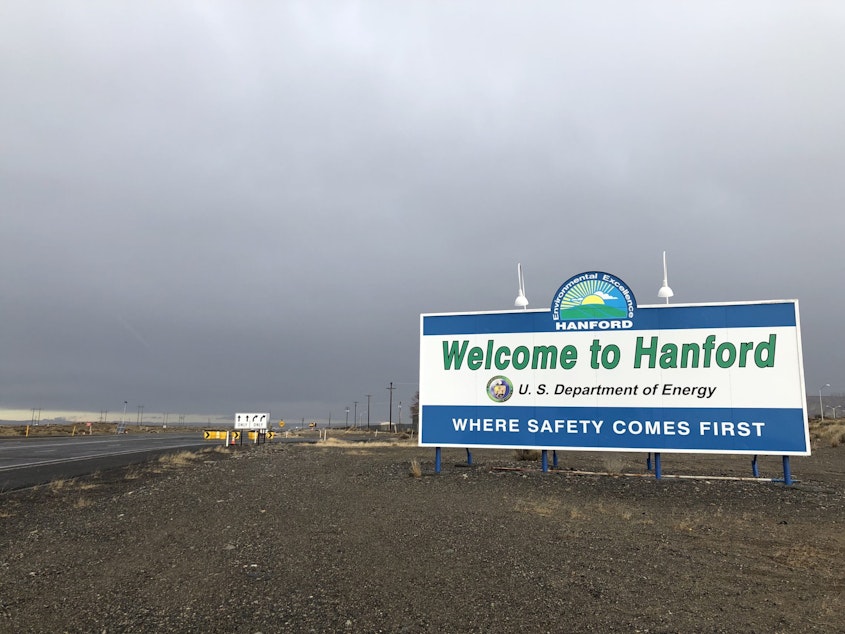Federal Watchdog Criticizes Energy Dept. For Hanford Cleanup, Tunnel Collapse

A new watchdog report says the federal government hasn’t done enough to prevent structural failures at the Hanford Nuclear Site’s aging facilities. The accountability report comes after a tunnel partially collapsed in 2017, where for decades the federal government stored highly contaminated radioactive waste.
The report from the independent Government Accountability Office says the U.S. Department of Energy has not found the root causes of the partial collapse of the waste-storage tunnel, and that failures in DOE’s investigation, inspections and maintenance of other aging and contaminated facilities is concerning.
Some buildings haven’t had people or other remote sensing inside in 50 years. The reports said that without those types of inspections, it’s hard to say whether another incident like the PUREX tunnel collapse could happen in the future.
In 2017, workers spotted a partially collapsed hole in the top of the PUREX Tunnel 1, prompting concerns of potential radioactive contamination. During the Cold War, the federal government used the PUREX Plant as a disposal site for rail cars filled with highly radioactive material.
In the end, no airborne radiation leaks were detected, and no workers were hurt. The tunnel was sealed with grout several months later. Workers later sealed a larger second tunnel at the facility with grout, after fears it could also collapse.
Sponsored
Major Site
Hanford was a major site of the nation’s plutonium production during WWII and the Cold War. It’s now one of the most contaminated radioactive waste sites in North America.
The GAO report said the Energy Department has been aware of structural problems at the Purex Tunnel 1 since the 1970s.
Workers conducted physical inspections until 1991, when recommendations came to look at the tunnel again in 10 years. But the report notes a physical inspection in 2001 didn’t happen, and an assessment didn’t happen until after the 2017 tunnel collapse.
The Energy Department didn’t initiate a full investigation into the root causes of the Tunnel 1 collapse, even though the department required an investigation, the report said.
Sponsored
(Story continues below)
WATCH: How The Hanford Tunnel Collapsed
https://www.youtube.com/watch?v=oRBKKyyUFRo
“By conducting a root cause analysis to determine any programmatic weaknesses that contributed to the collapse of PUREX Tunnel 1, and taking action to address any identified weaknesses, DOE would have greater assurance that another, similar event will not take place at Hanford,” the report said.
The report found that at 18 buildings no longer in use, routine surveillance inspections happen at “selected facilities.” There are 10 facilities that haven’t been inspected for structural integrity, out of concern for worker safety – because of radiation or other risks.
Sponsored
The report also found that, since 2013, the Department of Energy hasn’t provided proper oversight or audits for field offices and contractors. GAO inspectors said that means there is no way to ensure facilities have safe conditions until they are fully cleaned up, which could take more than 60 years.
Recommendations
GAO listed three recommendations: figure out the root cause of the 2017 partial tunnel collapse; conduct routine, comprehensive inspections of obsolete facilities and take timely action “as warranted”; and assess the oversight of these facilities.
The Department of Energy has agreed to the recommendations.
But that didn’t satisfy U.S. Sen. Ron Wyden of Oregon. In a letter to Department of Energy Secretary Dan Brouillette, Wyden called on the department to take additional steps to ensure the safety of Hanford workers and nearby communities.
Sponsored
Wyden asked what, specifically, would be done to prevent other structural failures like the PUREX tunnel collapse.
“I am writing today to ask that you outline the specific steps that the Department will take to ensure that there will not be any future unexpected failures of containment at legacy radioactive waste facilities at Hanford,” Wyden wrote.Courtney Flatt covers environmental and natural resource issues for Northwest Public Broadcasting. She is based in Washington’s Tri-Cities. On Twitter: @courtneyflatt
Copyright 2019 Northwest Public Broadcasting. To see more, visit nwpb.org [Copyright 2020 Northwest News Network]
